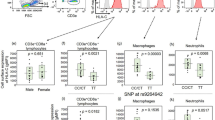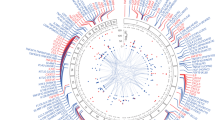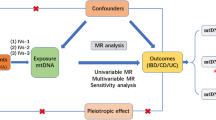Abstract
Crohn's disease and ulcerative colitis, the two main types of inflammatory bowel disease (IBD), were reported to be associated with a variety of genetic polymorphisms. A subset of these polymorphisms was identified in both diseases and only three of them were found in primary sclerosing cholangitis (PSC). rs3197999 (Arg689Cys) located in the MST1 gene is one of the most convincingly replicated IBD/PSC-associated polymorphisms but its functional consequences have not been investigated, yet. We expressed both MST1 gene variants (Arg689 (MSPwt) and Cys689 (MSPmut)) in a eukaryotic cell system and compared their stimulatory effects on macrophage-like THP-1 cells. Except for the rate of apoptosis that remained unchanged, MSPmut significantly increased the stimulatory effect of MSP (macrophage-stimulating protein) on chemotaxis and proliferation by THP-1 cells, indicating a gain of function associated with the Arg689Cys exchange. A broad set of evidence reported previously suggests that pro-inflammatory changes in macrophage function have a major role in the initiation of the inflammatory process in IBD and PSC. Therefore, the gain of function observed with rs3197999 in MST1 might provide a cellular mechanism for the consistent association of this polymorphism with an increased risk for IBD and PSC.
This is a preview of subscription content, access via your institution
Access options
Subscribe to this journal
Receive 6 digital issues and online access to articles
$119.00 per year
only $19.83 per issue
Buy this article
- Purchase on Springer Link
- Instant access to full article PDF
Prices may be subject to local taxes which are calculated during checkout





Similar content being viewed by others
References
Sartor RB . Microbial influences in inflammatory bowel diseases. Gastroenterology 2008; 134: 577–594.
Xavier RJ, Podolsky DK . Unravelling the pathogenesis of inflammatory bowel disease. Nature 2007; 448: 427–434.
Cho JH, Brant SR . Recent insights into the genetics of inflammatory bowel disease. Gastroenterology 2011; 140: 1704–1712.e2.
Franke A, McGovern DPB, Barrett JC, Wang K, Radford-Smith GL, Ahmad T et al. Genome-wide meta-analysis increases to 71 the number of confirmed Crohn's disease susceptibility loci. Nat Genet 2010; 42: 1118–1125.
Smith PD, Ochsenbauer-Jambor C, Smythies LE . Intestinal macrophages: unique effector cells of the innate immune system. Immunol Rev 2005; 206: 149–159.
Bernstein CN, Blanchard JF, Rawsthorne P, Yu N . The prevalence of extraintestinal diseases in inflammatory bowel disease: a population-based study. Am J Gastroenterol 2001; 96: 1116–1122.
Cameron RG, Blendis LM, Neuman MG . Accumulation of macrophages in primary sclerosing cholangitis. Clin Biochem 2001; 34: 195–201.
Bowlus C . Cutting edge issues in primary sclerosing cholangitis. Clin Rev Allergy Immunol 2011; 41: 139–150.
Anderson CA, Massey DCO, Barrett JC, Prescott NJ, Tremelling M, Fisher SA et al. Investigation of Crohn's disease risk loci in ulcerative colitis further defines their molecular relationship. Gastroenterology 2009; 136: 523–529.e3.
Barrett JC, Hansoul S, Nicolae DL, Cho JH, Duerr RH, Rioux JD et al. Genome-wide association defines more than 30 distinct susceptibility loci for Crohn's disease. Nat Genet 2008; 40: 955–962.
Fisher SA, Tremelling M, Anderson CA, Gwilliam R, Bumpstead S, Prescott NJ et al. Genetic determinants of ulcerative colitis include the ECM1 locus and five loci implicated in Crohn's disease. Nat Genet 2008; 40: 710–712.
Goyette P, Lefebvre C, Ng A, Brant SR, Cho JH, Duerr RH et al. Gene-centric association mapping of chromosome 3p implicates MST1 in IBD pathogenesis. Mucosal Immunol 2008; 1: 131–138.
Karlsen TH, Franke A, Melum E, Kaser A, Hov JR, Balschun T et al. Genome-wide association analysis in primary sclerosing cholangitis. Gastroenterology 2010; 138: 1102–1111.
Melum E, Franke A, Schramm C, Weismuller TJ, Gotthardt DN, Offner FA et al. Genome-wide association analysis in primary sclerosing cholangitis identifies two non-HLA susceptibility loci. Nat Genet 2011; 43: 17–19.
Waterman M, Xu W, Stempak JM, Milgrom R, Bernstein CN, Griffiths AM et al. Distinct and overlapping genetic loci in Crohn's disease and ulcerative colitis: correlations with pathogenesis. Inflamm Bowel Dis 2011; 17: 1936–1942.
Miller M, Leonard EJ . Mode of receptor binding and activation by plasminogen-related growth factors. FEBS Lett 1998; 429: 1–3.
Yoshimura T, Yuhki N, Wang M, Skeel A, Leonard EJ . Cloning, sequencing, and expression of human macrophage stimulating protein (MSP, MST1) confirms MSP as a member of the family of kringle proteins and locates the MSP gene on chromosome 3. J Biol Chem 1993; 268: 15461–15468.
Wang MH, Zhou YQ, Chen YQ . Macrophage-stimulating protein and RON receptor tyrosine kinase: potential regulators of macrophage inflammatory activities. Scand J Immunol 2002; 56: 545–553.
Wang M, Yoshimura T, Skeel A, Leonard EJ . Proteolytic conversion of single chain precursor macrophage-stimulating protein to a biologically active heterodimer by contact enzymes of the coagulation cascade. J Biol Chem 1994; 269: 3436–3440.
Donate LE, Gherardi E, Srinivasan N, Sowdhamini R, Aparicio S, Blundell TL . Molecular evolution and domain structure of plasminogen-related growth factors (HGF/SF and HGF1/MSP). Prot Sci 1994; 3: 2378–2394.
Han S, Stuart LA, Degen SJ . Characterization of the DNF15S2 locus on human chromosome 3: identification of a gene coding for four kringle domains with homology to hepatocyte growth factor. Biochemistry 1991; 30: 9768–9780.
Gaudino G, Follenzi A, Naldini L, Collesi C, Santoro M, Gallo KA et al. Ron is a heterodimeric tyrosine kinase receptor activated by the HGF homologue MSP. EMBO J 1994; 13: 3524–3532.
Gaudino G, Avantaggiato V, Follenzi A, Acampora D, Simeone A, Comoglio PM . The proto-oncogene RON is involved in development of epithelial, bone and neuro-endocrine tissues. Oncogene 1995; 11: 2627–2637.
Quantin B, Schuhbaur B, Gesnel M, Dollé P, Breathnach R . Restricted expression of the RON gene encoding the macrophage stimulating protein receptor during mouse development. Am J Anat 1995; 204: 383–390.
Iwama A, Wang MH, Yamaguchi N, Ohno N, Okano K, Sudo T et al. Terminal differentiation of murine resident peritoneal macrophages is characterized by expression of the STK protein tyrosine kinase, a receptor for macrophage-stimulating protein. Blood 1995; 86: 3394–3403.
Kurihara N, Iwama A, Tatsumi J, Ikeda K, Suda T . Macrophage-stimulating protein activates STK receptor tyrosine kinase on osteoclasts and facilitates bone resorption by osteoclast-like cells. Blood 1996; 87: 3704–3710.
Liu Q, Fruit K, Ward J, Correll PH . Negative regulation of macrophage activation in response to IFN-g and lipopolysaccharide by the STK/RON receptor tyrosine kinase. J Immunol 1999; 163: 6606–6613.
Nanney LB, Skeel A, Luan J, Polis S, Richmond A, Wang MH et al. Proteolytic cleavage and activation of pro-macrophage-stimulating protein and upregulation of its receptor in tissue injury. J Invest Dermatol 1998; 111: 573–581.
Chen Q, DeFrances MC, Zarnegar R . Induction of met proto-oncogene (hepatocyte growth factor receptor) expression during human monocyte-macrophage differentiation. Cell Growth Differ 1996; 7: 821–832.
Anderson CA, Boucher G, Lees CW, Franke A, D'Amato M, Taylor KD et al. Meta-analysis identifies 29 additional ulcerative colitis risk loci, increasing the number of confirmed associations to 47. Nat Genet 2011; 43: 246–252.
Hugot J, Chamaillard M, Zouali H, Lesage S, Cezard J, Belaiche J et al. Association of NOD2 leucine-rich repeat variants with susceptibility to Crohn's disease. Nature 2001; 411: 599–603.
Abraham C, Cho JH . Functional consequences of NOD2 (CARD15) mutations. Inflamm Bowel Dis 2006; 12: 641–650.
Brant SR, Wang M, Rawsthorne P, Sargent M, Datta LW, Nouvet F et al. A population-based case-control study of CARD15 and other risk factors in Crohn's disease and ulcerative colitis. Am J Gastroenterol 2007; 102: 313–323.
Grimm MC, Pullman WE, Bennett GM, Sullivan PJ, Pavli P, Doe WF . Direct evidence of monocyte recruitment to inflammatory bowel disease mucosa. J Gastroenterol Hepatol 1995; 10: 387–395.
Rugtveit J, Brandtzaeg P, Halstensen TS, Fausa O, Scott H . Increased macrophage subset in inflammatory bowel disease: apparent recruitment from peripheral blood monocytes. Gut 1994; 35: 669–674.
Smythies LE, Maheshwari A, Clements R, Eckhoff D, Novak L, Vu HL et al. Mucosal IL-8 and TGF-beta recruit blood monocytes: evidence for cross-talk between the lamina propria stroma and myeloid cells. J Leukoc Biol 2006; 80: 492–499.
Smith PD, Smythies LE, Shen R, Greenwell-Wild T, Gliozzi M, Wahl SM . Intestinal macrophages and response to microbial encroachment. Mucosal Immunol 2011; 4: 31–42.
Glocker E, Kotlarz D, Boztug K, Gertz EM, SchÃffer AA, Noyan F et al. Inflammatory bowel disease and mutations affecting the interleukin-10 receptor. N Engl J Med 2009; 361: 2033–2045.
van Limbergen J, Wilson DC, Satsangi J . The genetics of Crohn's disease. Annu Rev Genom Human Genet 2009; 10: 89–116.
Morrison AC, Wilson CB, Ray M, Correll PH . Macrophage-stimulating protein, the ligand for the stem cell-derived tyrosine kinase/RON receptor tyrosine kinase, inhibits IL-12 production by primary peritoneal macrophages stimulated with IFN-gamma and lipopolysaccharide. J Immunol 2004; 172: 1825–1832.
Bettelli E, Korn T, Oukka M, Kuchroo VK . Induction and effector functions of TH17 cells. Nature 2008; 453: 1051–1057.
Mannon PJ, Fuss IJ, Mayer L, Elson CO, Sandborn WJ, Present D et al. Anti interleukin-12 antibody for active Crohn's disease. N Engl J Med 2004; 351: 2069–2079.
Danilkovitch A, Miller M, Leonard EJ . Interaction of macrophage-stimulating protein with its receptor. J Biol Chem 1999; 274: 29937–29943.
Yoshikawa W, Hara H, Takehara T, Shimonishi M, Sakai H, Shimizu N et al. Characterization of free alpha- and beta-chains of recombinant macrophage-stimulating protein. Arch Biochem Biophys 1999; 363: 356–360.
Verhoeckx KCM, Bijlsma S, de Groene EM, Witkamp RF, van der Greef J, Rodenburg RJT . A combination of proteomics, principal component analysis and transcriptomics is a powerful tool for the identification of biomarkers for macrophage maturation in the U937 cell line. Proteomics 2004; 4: 1014–1028.
Acknowledgements
This article includes experimental work performed by Friederike Häuser in fulfilment of the requirements for her doctoral thesis. This work was supported by the research and education funds of the University Clinic of Mainz (MAIFOR program, Julia K Bickmann).
Author information
Authors and Affiliations
Corresponding author
Ethics declarations
Competing interests
The authors declare no conflict of interest.
Additional information
Supplementary Information accompanies the paper on Genes and Immunity website
Rights and permissions
About this article
Cite this article
Häuser, F., Deyle, C., Berard, D. et al. Macrophage-stimulating protein polymorphism rs3197999 is associated with a gain of function: implications for inflammatory bowel disease. Genes Immun 13, 321–327 (2012). https://doi.org/10.1038/gene.2011.88
Received:
Revised:
Accepted:
Published:
Issue Date:
DOI: https://doi.org/10.1038/gene.2011.88
Keywords
This article is cited by
-
Inflammatory bowel disease (IBD) locus 12: is glutathione peroxidase-1 (GPX1) the relevant gene?
Genes & Immunity (2015)
-
Genetics in PSC: What Do the “Risk Genes” Teach Us?
Clinical Reviews in Allergy & Immunology (2015)
-
MSP–RON signalling in cancer: pathogenesis and therapeutic potential
Nature Reviews Cancer (2013)



